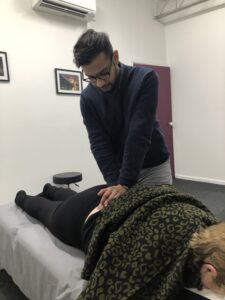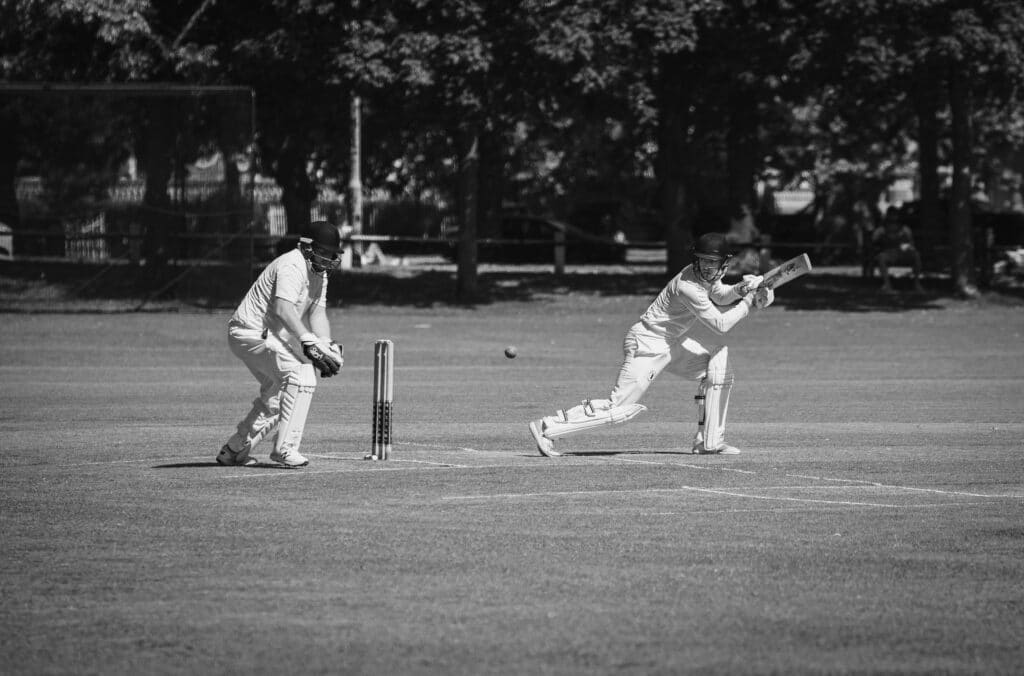What we’ll cover
- Key highlights
- What Is Low Back Pain?
- There are three broad classifications:
- Common symptoms include:
- Common Causes of Low Back Pain
- Case Study
- What happens at your first physio appointment for back pain?
- What happens in a physiotherapy session?
- Things happen along the way.
- What can I expect after physiotherapy for low back pain?
- Preventing Recurrence
What can I expect from physiotherapy for low back pain?
Are you curious about what to expect in an appointment at Malvern East Physiotherapy? Our physiotherapist Vernon Mittal guides us through his recent case study where he was able to diagnose and treat a patient’s lower back and hip pain successfully.
Key highlights
- Most low back pain cases are non-specific and assessed through movement, strength, and flexibility testing.
- Treatment typically includes manual therapy, education, and a personalised home exercise plan.
- Clear goal-setting and patient education are essential for recovery and long-term self-management.
- Early intervention leads to faster improvement, with notable progress often seen within two weeks.
What Is Low Back Pain?
Low back pain refers to discomfort or pain felt in the lower back region, typically between the ribs and the pelvis. It can range from a dull ache to a sharp, stabbing sensation and may be acute (short-term) or chronic (lasting more than three months).
There are three broad classifications:
- Non-specific low back pain (most common)
- Low back pain with nerve root involvement (e.g., sciatica)
- Serious spinal pathology (rare: fractures, cancer, infections)
Most cases are non-specific, meaning the pain cannot be attributed to a specific structural cause like a herniated disc or fracture.
Common symptoms include:
- Pain: Ranging from a dull ache to sharp pain.
- Stiffness: Difficulty moving or bending.
- Muscle Spasms: Sudden, intense pain due to muscle contractions.
- Radiating Pain: Pain that spreads to the buttocks or down the legs (sciatica)
Common Causes of Low Back Pain
| Cause | Description |
| Muscle Strain | Overexertion or sudden movements causing micro-tears |
| Poor Posture | Prolonged sitting or slouching weakening core support |
| Herniated Disc | Disc bulge pressing on nerves causing pain/sciatica |
| Arthritis & Degeneration | Age-related joint and tissue wear |
| Sedentary Lifestyle | Lack of movement leads to stiffness and muscle atrophy |
Case Study
I recently discharged a patient of mine who had lower back and hip pain. This is an outline of her physiotherapy journey, which gives a brief insight into what processes are involved when I treat patients with similar injuries.
What happens at your first physio appointment for back pain?
In our first appointment, her main complaint was acute Lower Back pain (LBP), which had occurred randomly over the weekend. It was giving her sharp pains in her lower back, which made it very difficult for her to move around and do basic daily activities. She was understandably quite concerned about this pain and therefore sought physiotherapy treatment.
I began by asking her a number of specific questions about her pain, which allowed me to gather all the relevant information that I needed to guide further assessment and hence come up with my diagnosis. I then looked for how much range of movement she had in her lower back which is a strong tool for me to decipher a diagnosis.
Alongside a host of other tests such as muscle flexibility, joint flexibility, strength and nerve tests as well as examining the relevant joints and muscles, my initial impressions were that she had suffered from an Acute Lower Back Muscular Spasm.
Treatment for this injury involved soft tissue work (massage + joint mobilisations) over the affected area with education and an appropriate home-exercise program (HEP) given. Education cannot be underestimated because it is the hallmark of patient-centred care. It involves speaking about recovery timeframes, appropriate pain relief strategies, discussion of the anatomy and/or physiology and of the diagnosis itself.
Addressing whether the patient has any specific goals early in the rehabilitation process is vital to my treatment because it allows myself, and most importantly my patient, to work towards a common goal. When we hit that goal, we both know that the physiotherapy was a success and that treatment is no longer required.
What happens in a physiotherapy session?
The next three appointments all occurred within the next two weeks with treatment being similar to the initial appointment of soft tissue work, regular education and progressing her home exercises. I intentionally saw my patient regularly early on, as it was critical that we established positive results early in the rehabilitation process without allowing the pain to linger on for longer than it should. My patient progressed very well as she was able to do her activities of daily living without any pain in one and a half weeks after her initial appointment. It was a testament to her as she was very compliant with her HEP and took upon all the advice that was given to her. Making positive gains early in the rehabilitation process is vital to a successful recovery.
Things happen along the way.
Once we had controlled her LBP, and ticked off her goals, our focus turned to her ongoing hip complaint which she had been previously treated for and briefly mentioned in the initial appointment. My patient had suffered with this issue for several years and without it giving her any direct pain, it was a discomfort that was always present and was random in its occurrence. Similarly to her initial appointment, I asked her a range of specific questions about her hip and observed how much range of movement she had in the affected area. I found that there were ‘impingement-like’ symptoms present in her hip, which indicates that regaining lateral hip strength and control would be vital to rehabilitation.
Over the coming sessions, treatment involved soft-tissue release through the tight gluteal muscles and providing my patient with a vast array of hip exercises to do at home which would help to strengthen the affected muscles.
She was making good progress, however the severity of her symptoms were improving at a slower pace than what I expected. After delving deeper and identifying other potential sources of pain, I had a frank discussion with her, giving a diagnosis of Hip Osteoarthritis/wear-and-tear. Importantly, I stressed that disregarding the diagnosis, management would still be the same; hip strengthening exercises. She was understanding and quite happy with this diagnosis as she was able to finally understand what was going on for all these years.
What can I expect after physiotherapy for low back pain?
From the initial appointment to now, we were able to achieve a significantly positive outcome with both of her issues; low back pain and hip discomfort. She feels everything is on the right track and she even said that she was able to start running, which is something that she could not do for a long time. She is managing her work and personal training sessions much better than before and is content with the advice, education and exercises given to her which allow her to be fit and active for as long as possible.
Preventing Recurrence
Once you’ve recovered, staying pain-free requires ongoing attention. Here are key prevention tips:
| Prevention Strategy | Benefit |
| Daily movement | Maintains spinal flexibility |
| Ergonomic workstation | Reduces strain during work hours |
| Strength training | Protects spine from future injury |
| Smoking cessation | Improves disc health |
| Weight management | Reduces pressure on spine and joints |
If you are experiencing any pain or discomfort in your muscles/joints, please book in to see one of our qualified physiotherapists. You can book online or call our friendly team on 9571 6888.


